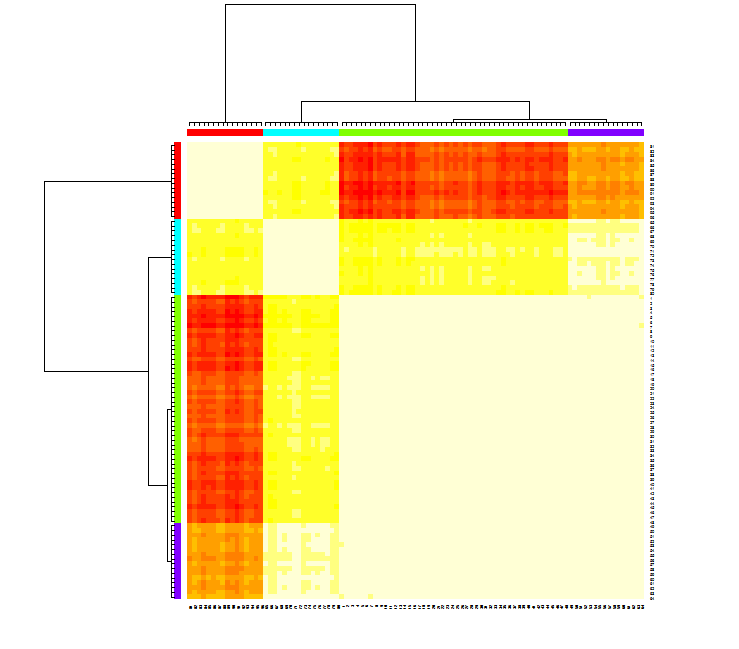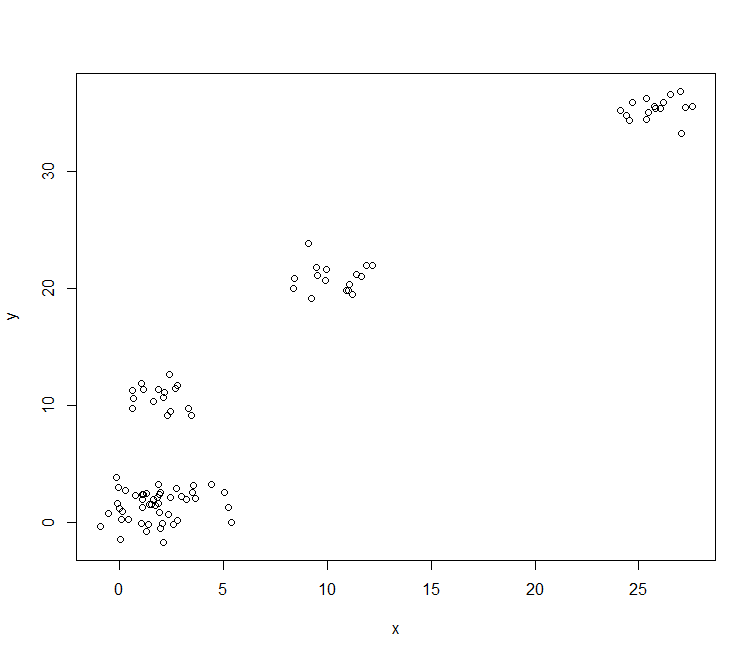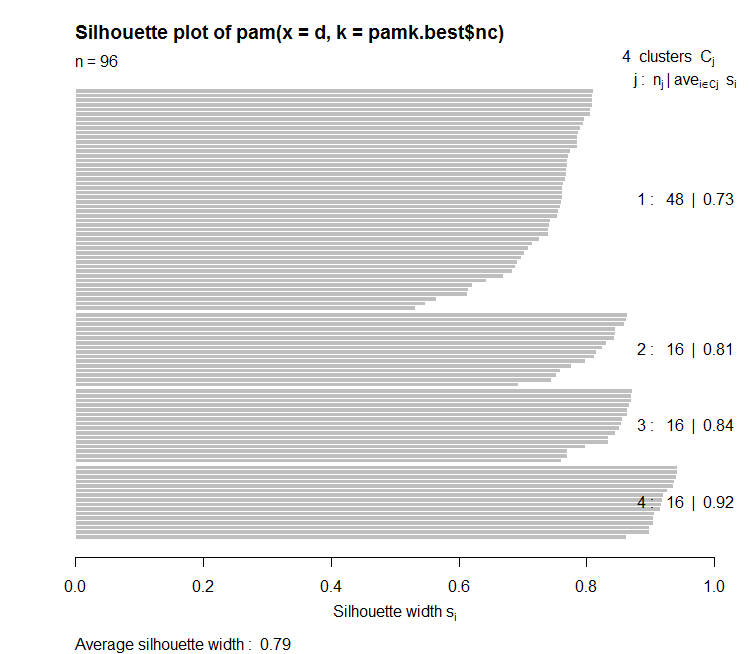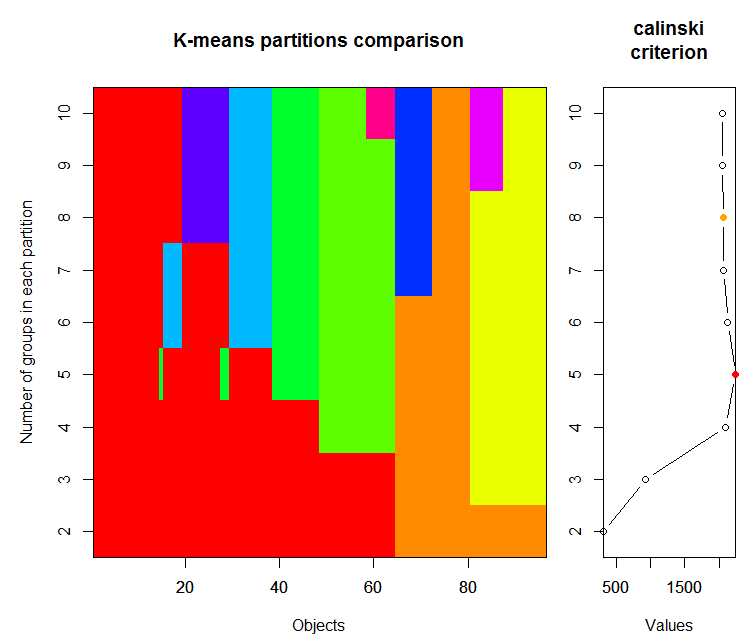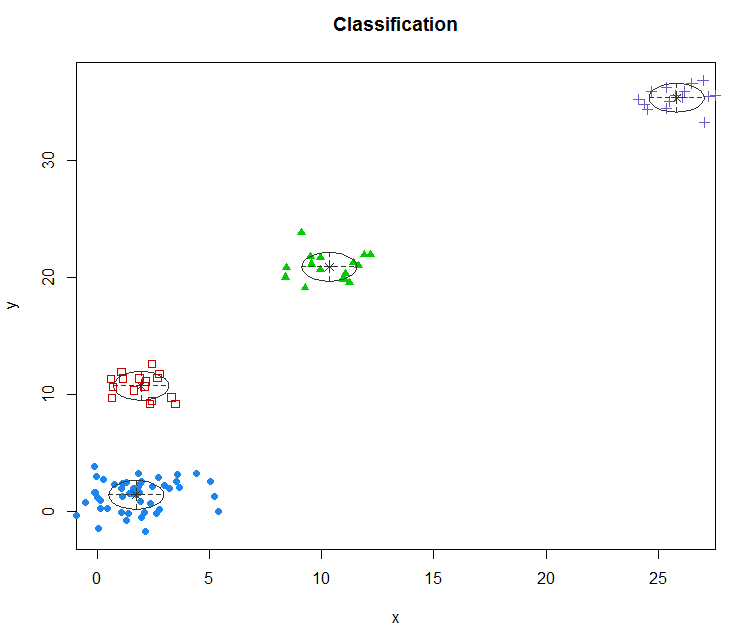R語言做聚類分析Kmeans時確定類的個數
阿新 • • 發佈:2019-02-19
方法一:
K平均演算法(k-means)
在下面的誤差平方和圖中,拐點(bend or elbow)的位置對應的x軸即k-means聚類給出的合適的類的個數。
> n = 100
> g=6
> set.seed(g)
> d <- data.frame(x = unlist(lapply(1:g, function(i) rnorm(n/g, runif(1)*i^2))), y = unlist(lapply(1:g, function(i) rnorm(n/g, runif(1)*i^2))))
> plot(d)
> > mydata <- d
>
> wss <- (nrow(mydata)-1 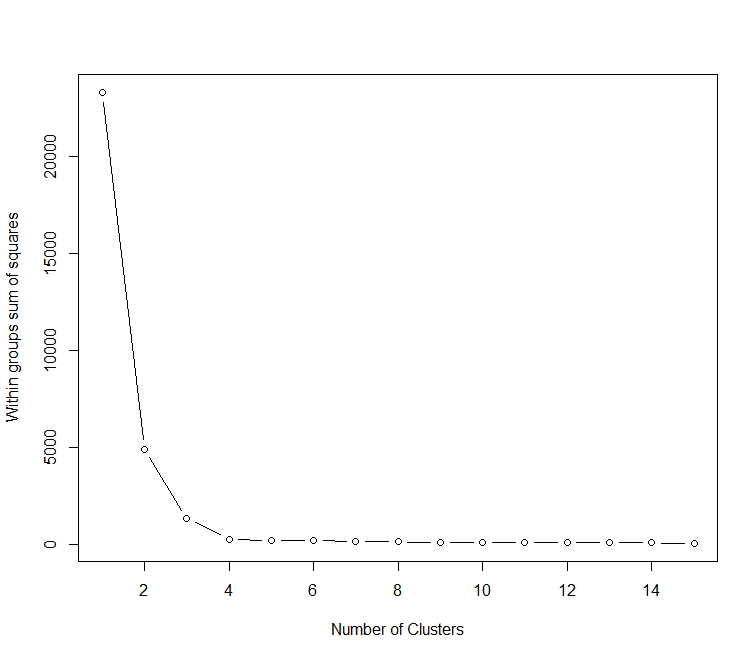
由上圖可以看出,該方法給出合理的類別個數是4個。
方法二:
K中心聚類演算法(K-mediods)
使用fpc包裡的pamk函式來估計類的個數:
> library(cluster)
Warning message:
程輯包‘cluster’是用R版本3.2.3 來建造的
> library(fpc)
> pamk.best <- pamk(d)
> cat("number of clusters estimated by optimum average silhouette width:", pamk.best$nc, "\n")
number of clusters estimated by optimum average silhouette width: 4
> plot(pam(d, pamk.best$nc)) 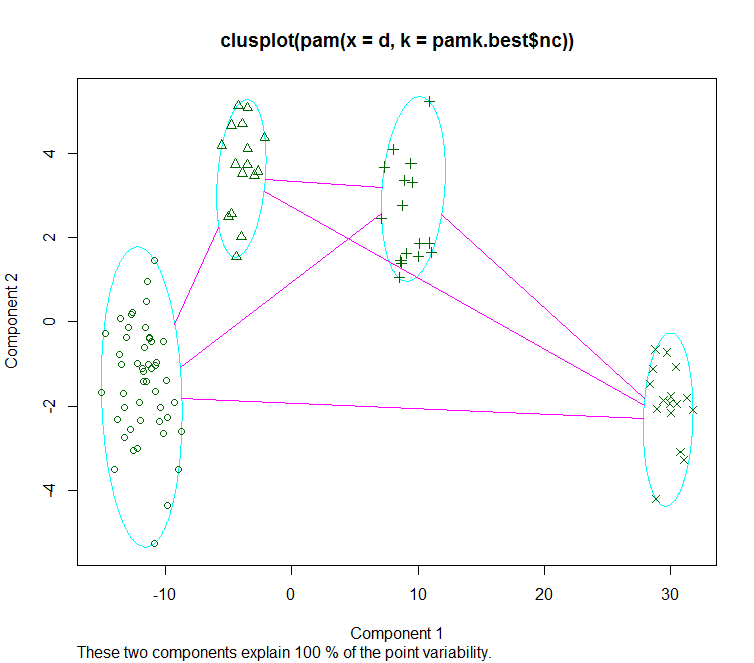
sihouette值是用來表示某一個物件和它所屬類的凝合力強度以及和其他類分離強度的,值範圍為-1到1,值越大表示該物件越匹配所屬類以及和鄰近類有多不匹配。
所以從上圖sihouette plot中可以看出,該方法給出的合理類的個數為4個。
方法三:
基於Calinsky Criterion
> require(vegan)
載入需要的程輯包:vegan
載入需要的程輯包:permute
載入需要的程輯包:lattice
This is vegan 2.4-0
Warning messages:
1: 程輯包‘vegan’是用R版本3.2.5 來建造的
2: 程輯包‘permute’是用R版本3.2.5 來建造的
3: 程輯包‘lattice’是用R版本3.2.3 來建造的
> fit <- cascadeKM(scale(d, center = TRUE, scale = TRUE), 1, 10, iter = 1000)
> plot(fit, sortg = TRUE, grpmts.plot = TRUE)
> calinski.best <- as.numeric(which.max(fit$results[2,]))
> cat("Calinski criterion optimal number of clusters:", calinski.best, "\n")
Calinski criterion optimal number of clusters: 5
> 由上圖我們可以看到,根據Calinsky標準,得到類的個數是5個。
方法四:
基於模型假設的聚類,利用的是mclust包:
> library(mclust)
__ ___________ __ _____________
/ |/ / ____/ / / / / / ___/_ __/
/ /|_/ / / / / / / / /\__ \ / /
/ / / / /___/ /___/ /_/ /___/ // /
/_/ /_/\____/_____/\____//____//_/ version 5.1
Type 'citation("mclust")' for citing this R package in publications.
Warning message:
程輯包‘mclust’是用R版本3.2.4 來建造的
> d_clust <- Mclust(as.matrix(d), G=1:20)
> m.best <- dim(d_clust$z)[2]
> cat("model-based optimal number of clusters:", m.best, "\n")
model-based optimal number of clusters: 4
> plot(d_clust)
Model-based clustering plots:
1: BIC
2: classification
3: uncertainty
4: density方法五:
基於AP演算法的聚類
> library(apcluster)
載入程輯包:‘apcluster’
The following object is masked from ‘package:stats’:
heatmap
Warning message:
程輯包‘apcluster’是用R版本3.2.5 來建造的
> d.apclus <- apcluster(negDistMat(r=2), d)
> cat("affinity propogation optimal number of clusters:", length(d.apclus@clusters), "\n")
affinity propogation optimal number of clusters: 4
> #4 得出的分類個數
> heatmap(d.apclus)
> plot(d.apclus, d)
> 